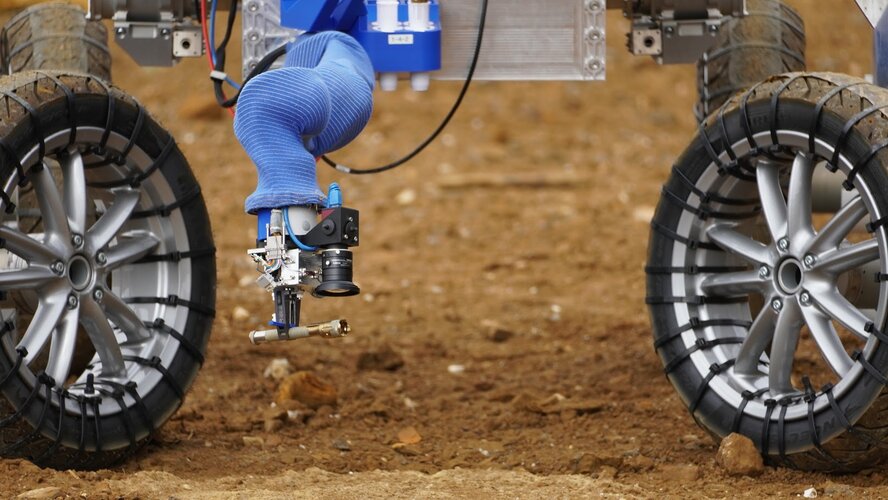A rover makes a fine addition to Europe’s lightsabre collection as it navigates the reddish terrain of a quarry on its own. This is the latest technology demonstration of a wheeled robot for precise sample collection without human intervention.
The sample tubes are a replica of the hermetically sealed samples that NASA’s Perseverance rover is leaving on Mars with precious martian soil inside. To most people on Earth, they resemble lightsabres.
This is the second time engineers from ESA and Airbus come together in Stevenage, UK, to conduct a field trial. “We have made some upgrades and now the rover is complete enough to autonomously navigate unknown terrain, detect and collect samples,” explains Pantelis Poulakis, project manager of ESA’s Sample Transfer Arm for the Mars Sample Return campaign.
This year’s rover trial introduced a novel feature: a robotic arm that faced the challenge of picking up the thin, 15-cm long sample tubes dropped around a simulated depot.
The rover mapped the terrain and located a tube, autonomously navigated towards it until it reached a parking position. At every stop, the rover used stereo cameras to build up a 180-degree map of the surroundings and plan its next maneouvres.
Once parked, the camera on top of the mast detected the tube and estimated its position with respect to the rover. The robotic arm initiated a complex choreography to move closer to the sample, fetch it and store it.
The tests lasted two weeks and involved the rover traveling 300 metres across several obstacles – from flat and straight-line traverses to rocky, zig-zagging setups. The engineers wanted the rover to learn how to scout another planet, dodging boulders and getting close to interesting samples. The rover and its new arm showed they could do their job autonomously.
“We are running these tests to bring together all the technologies we have developed individually,” says Pantelis. “This is essential to gain confidence in demanding scientific and exploration missions on Mars.”
“Each new field trial is an opportunity to boost the European capability to run large scale tests for complex rover systems,” says Geoffray Doignon, Airbus Stevenage technical lead for rover breadboarding activities. “It helps us understand the limitations of the design and validate rover operations in realistic conditions.”
Teams from industry and ESA will push the rover again next year to keep improving its performance. “Progress comes iteratively in small steps and not in one giant leap,” concedes Pantelis.
Follow the latest news about Europe’s martian adventures on the blog To Mars and Back.



 Image:
Ready for collection – lightsabres for Mars
Image:
Ready for collection – lightsabres for Mars